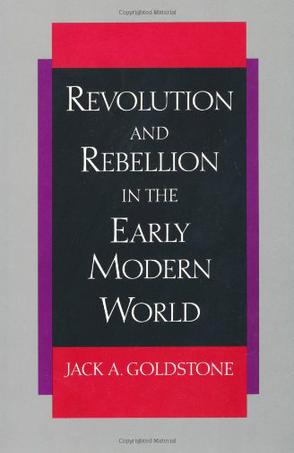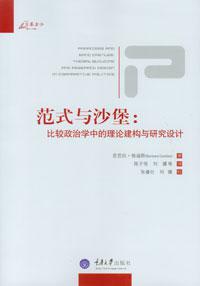-

Peasant Wars of the Twentieth Century
-

East Asian Social Movements
In the study of civil society and social movements, most cases are based in Western Europe and North America. These two areas of the world have similar histories and political ideals and structures in common which in turn, affect the structure of its civil society. In studying civil society in Asia, a different understanding of history, politics, and society is needed. The region’s long traditions of centralized, authoritarian states buttressed by Confucian and in some cases Communist ideologies may render this concept irrelevant. The chapters in this international volume cover most of the areas and countries traditionally defined as belonging to East Asia: Japan, Taiwan, South Korea, Hong Kong, Singapore and China. The case studies included in this volume confront the utility of using the Western concept of civil society, represented in its most active form – social movements – to think about East Asia popular politics. Along with providing an array of important case studies of social movements in East Asia, the introduction, chapters and conclusion in the book take up three major theoretical questions: the effect of the East Asian cultural, social and institutional context upon the mobilization, activities and outcomes of social movements in that region, the role of social movements in larger transformative processes, utility of Western social movement concepts in explaining social movements in East Asia. This book will be of interest to two major groups of readers, those who study East Asia and those who pursue social movements and civil society, as well as politics more generally. From the Back Cover In the study of civil society and social movements, most cases are based in Western Europe and North America. These two areas of the world have similar histories and political ideals and structures in common which in turn, affect the structure of its civil society. In studying civil society in Asia, a different understanding of history, politics, and society is needed. The region’s long traditions of centralized, authoritarian states buttressed by Confucian and in some cases Communist ideologies may render this concept irrelevant. The chapters in this international volume cover most of the areas and countries traditionally defined as belonging to East Asia: Japan, Taiwan, South Korea, Hong Kong, Singapore and China. The case studies included in this volume confront the utility of using the Western concept of civil society, represented in its most active form – social movements – to think about East Asia popular politics. Along with providing an array of important case studies of social movements in East Asia, the introduction, chapters and conclusion in the book take up three major theoretical questions: the effect of the East Asian cultural, social and institutional context upon the mobilization, activities and outcomes of social movements in that region the role of social movements in larger transformative processes utility of Western social movement concepts in explaining social movements in East Asia. This book will be of interest to two major groups of readers, those who study East Asia and those who pursue social movements and civil society, as well as politics more generally. -

Revolution and Rebellion in the Early Modern World
What can the great crises of the past teach us about contemporary revolutions? Arguing from an exciting and original perspective, Goldstone suggests that great revolutions were the product of 'ecological crises' that occurred when inflexible political, economic, and social institutions were overwhelmed by the cumulative pressure of population growth on limited available resources. Moreover, he contends that the causes of the great revolutions of Europe--the English and French revolutions--were similar to those of the great rebellions of Asia, which shattered dynasties in Ottoman Turkey, China, and Japan. The author observes that revolutions and rebellions have more often produced a crushing state orthodoxy than liberal institutions, leading to the conclusion that perhaps it is vain to expect revolution to bring democracy and economic progress. Instead, contends Goldstone, the path to these goals must begin with respect for individual liberty rather than authoritarian movements of 'national liberation.' Arguing that the threat of revolution is still with us, Goldstone urges us to heed the lessons of the past. He sees in the United States a repetition of the behavior patterns that have led to internal decay and international decline in the past, a situation calling for new leadership and careful attention to the balance between our consumption and our resources. Meticulously researched, forcefully argued, and strikingly original, Revolutions and Rebellions in the Early Modern World is a tour de force by a brilliant young scholar. It is a book that will surely engender much discussion and debate. -

强社会与弱国家
为何即使拥有那么多资源和处置权,还是有那么多亚非拉国家在指导其国民行为时困难重重?为何同时又有为数甚少的几个国家成功地取得了这种控制能力?失效的法律和社会政策对国家本身又会造成什么样的影响?那么来看看乔尔·S.米格代尔的《凤凰文库·政治学前沿系列:强社会与弱国家(第三世界的国家社会关系及国家能力)》吧。 《凤凰文库·政治学前沿系列:强社会与弱国家(第三世界的国家社会关系及国家能力)》采取新的研究视角,指出:在亚非拉地区,国家机构在人群中——甚至是最偏远的山村——建立了其机构。然而,近距离观察这些机构,却会发现它们往往按截然不同于其远在首都的创立者们设想的原则行事。解决这一悖论,可采取强调国家和其他社会组织争夺社会控制的国家社会关系的模型,并推行一种国家成功战胜社会的理论。 -

范式与沙堡
本书是对政治学领域进行研究设计的基本问题的方法论介绍,内容浅显易懂,是一本使用的操作指南,适合政治学、社会学、人类学、经济学和历史学专业的研究生和本科生及其导师使用。全书分为六章,分别论述研究设计与相关知识的构建;研究问题的提出如何影响研究结果;研究对象和案例的选择如何影响研究结果;研究论据的采用如何影响研究结果;研究方法和技术的选择如何影响研究结果;以及最后的总结。 -

Professionals, Power and Solidarity in Poland
Michael Kennedy develops a theoretical conception of Soviet-type societies by analyzing Solidarity's significance on three levels. First, he explains the background to and nature of the conflict between Solidarity and the authorities by examining the relation between the distribution of power and movement strategies. Second, he considers the implications of Solidarity's struggle for the theory of the Soviet-type system's reproduction and transformation by offering a critique and synthesis of relevant theories of class and civil society. Third, he examines the internal constitution of Solidarity in terms of gender and, in particular, cross-class alliances. He argues that because engineers and physicians were dependent on the self-organized working class in this conflict between civil society and state, professional projects had to be recast in visions suitable to the alliance. In a concluding chapter, he explores the implications of his analysis both for understanding perestroika in the Soviet Union and more generally for reformulating a critical sociology of Soviet-type societies.